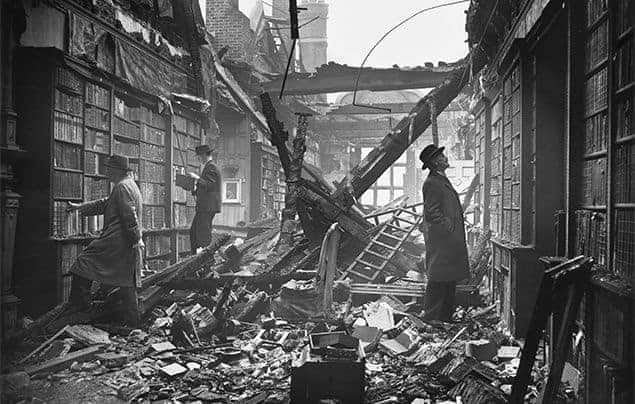World War II shook the entire world to its core and its reverberations have been felt across the globe for decades. It led to the deaths of tens of millions of people, the destruction of many cities, towns, villages and other infrastructure and also displaced tens of millions of people from their homes.
There was a lot of ground-breaking technology used during combat for the first time, such as aerial combat and nuclear weapons. There is no doubting that this War changed the world forever and it has left everybody on edge hoping that another war of this scale breaks out.
With a lot of countries now having a nuclear arsenal, any such war could be even more catastrophic and could lead to the entire annihilation of a given country.
However, thankfully there have been no global conflicts since the Second World War and hopefully, it long continues in that way. It is still a fascinating topic studying the battles that took place and looking at the tactics that were used on and off the battlefield. There were great feats of innovation and industry during the Second World War that changed how people live their lives.
You always hear stories about people finding some great artifacts from the Second World War, such as weapons or gear and the likes, as well as cities and towns having to be evacuated after the discovery of some unexploded ordnance that was dropped during the War.
The frequency of these discoveries still hasn’t slowed down even though more than seven decades have passed since the conflict. Some of these artifacts are truly astonishing and will blow your mind.
Here are 10 unbelievable new World War II discoveries that have been made in recent years.

10. Discovery of an ME 262 Jet Inside of a Bomb Crater
Air warfare was first introduced in the Second World War and this led to a lot of devastation both in the air and on the ground and sea. This meant that many targets that were previously unreachable could now be targeted with attacks from the air, causing widespread devastation and panic. As the war went on, more sophisticated aircraft and weapons were created which caused further damage and casualties. The Japanese even got to a stage where they began to use their own aircraft as weapons, performing suicide missions whereby they would fly their planes into American ships in the Pacific Ocean.
There have been many stories about unexploded ordnance that was dropped by aircraft during World War II being found, but recently in the Netherlands, there was a discovery of an actual jet plane. For example, in June of 2010 there was an Allied 500kg bomb found by construction workers about 23 feet under the ground in Gottingen, Germany which exploded when the expert team had been trying to disarm the bomb. This led to the deaths of three people, with another six people being injured. In January of 2013, a digger caused a World War II bomb to be detonated after debris struck it, leading to the death of the digger operator and wounding several others.
The jet plane discovery was made in October of 2014 and it was in a field on a farm located nearby the Deelen Airbase in Arhe, Netherlands that workers from the Museum Deelen Airbase made the discovery of a Messerchmitt 262. It is believed that this plane had been shot down on September 12th, 1944 near to the village of Elden and that it had remained there since. The pilot was named as Unteroffizier Schauder and he was killed in the aircraft. What the Germans had done when it happened was remove the wreckage and place it in Deelen and hid the plane in a bomb crater so it would not be seen.

